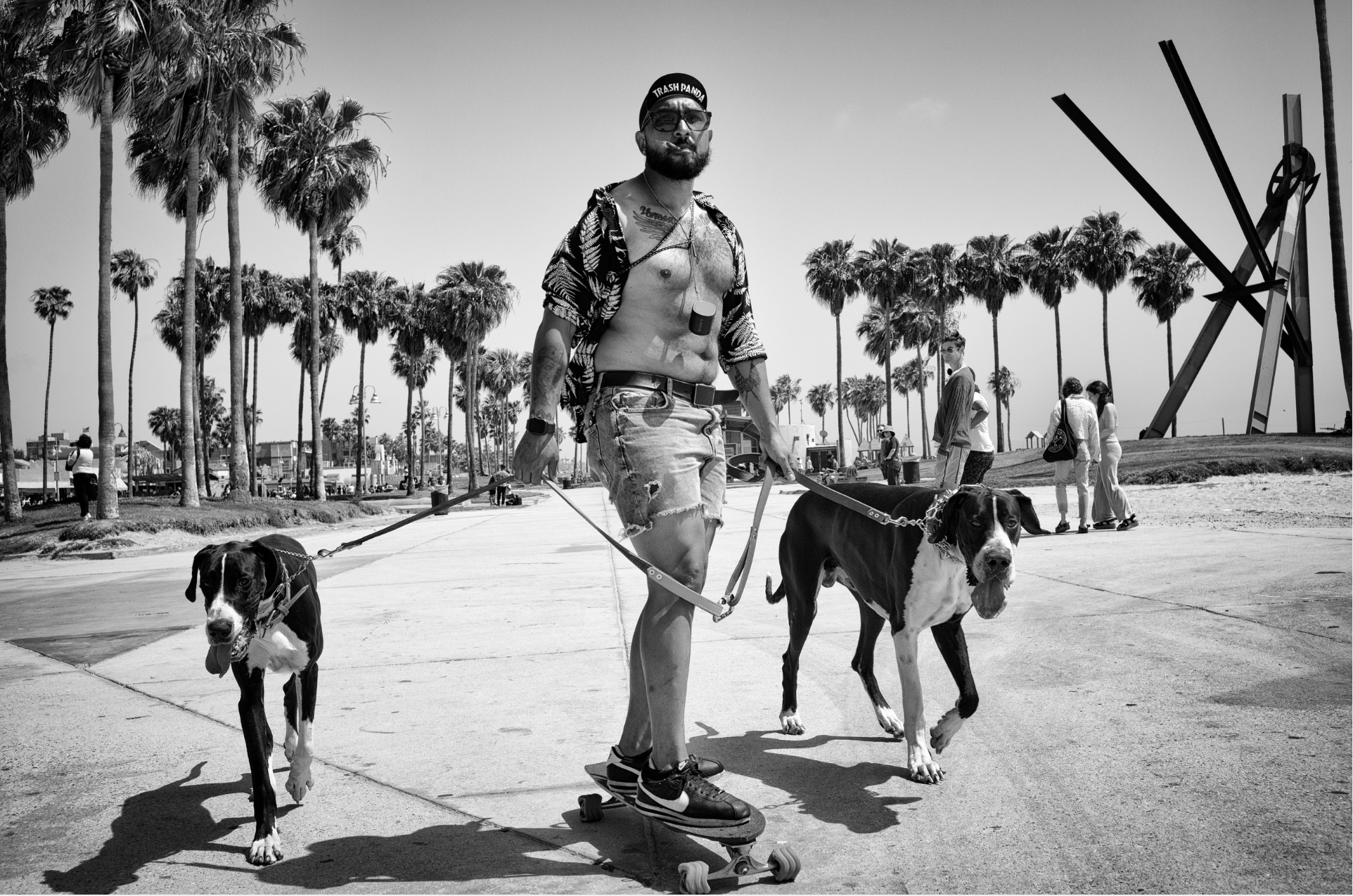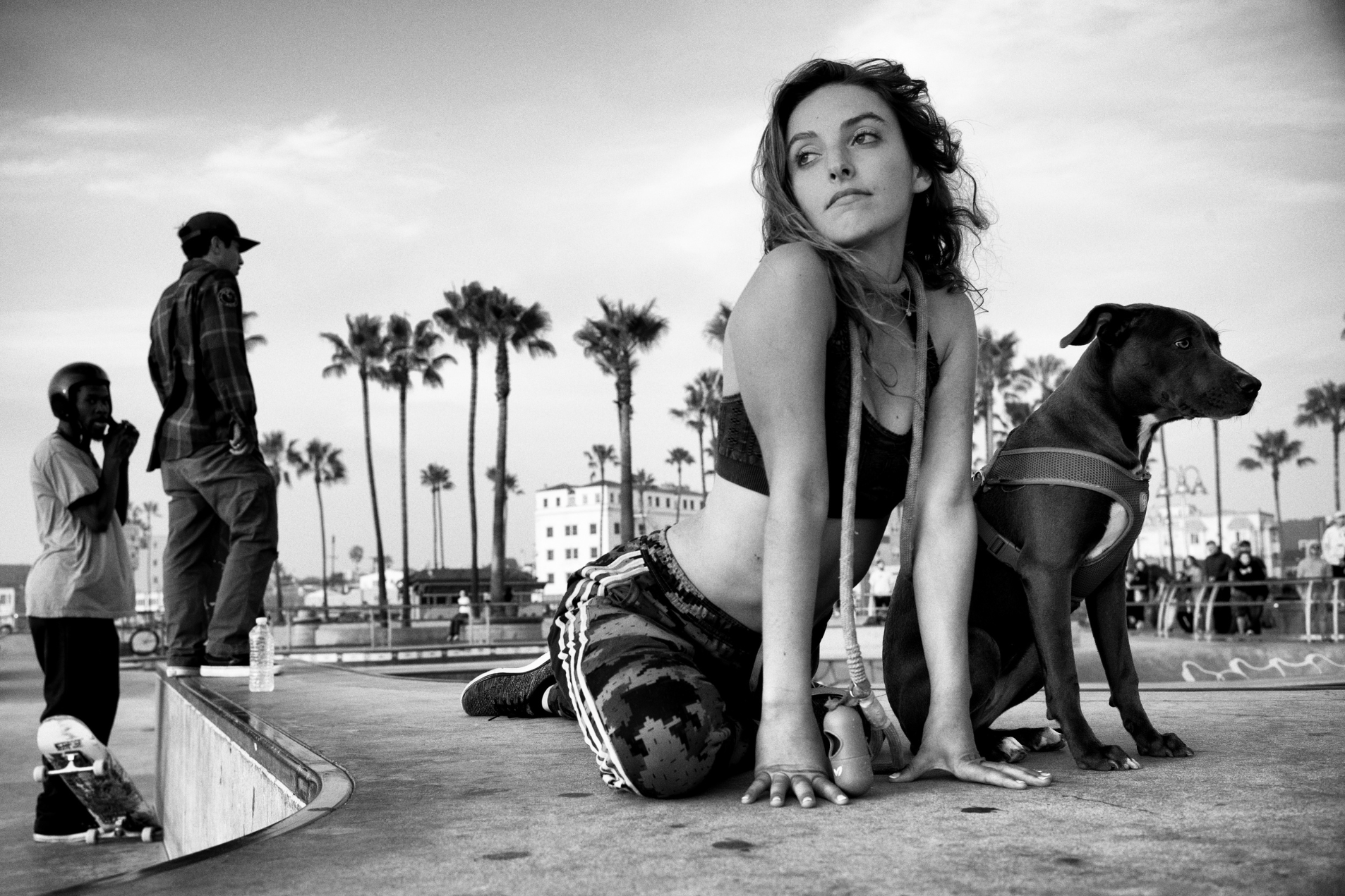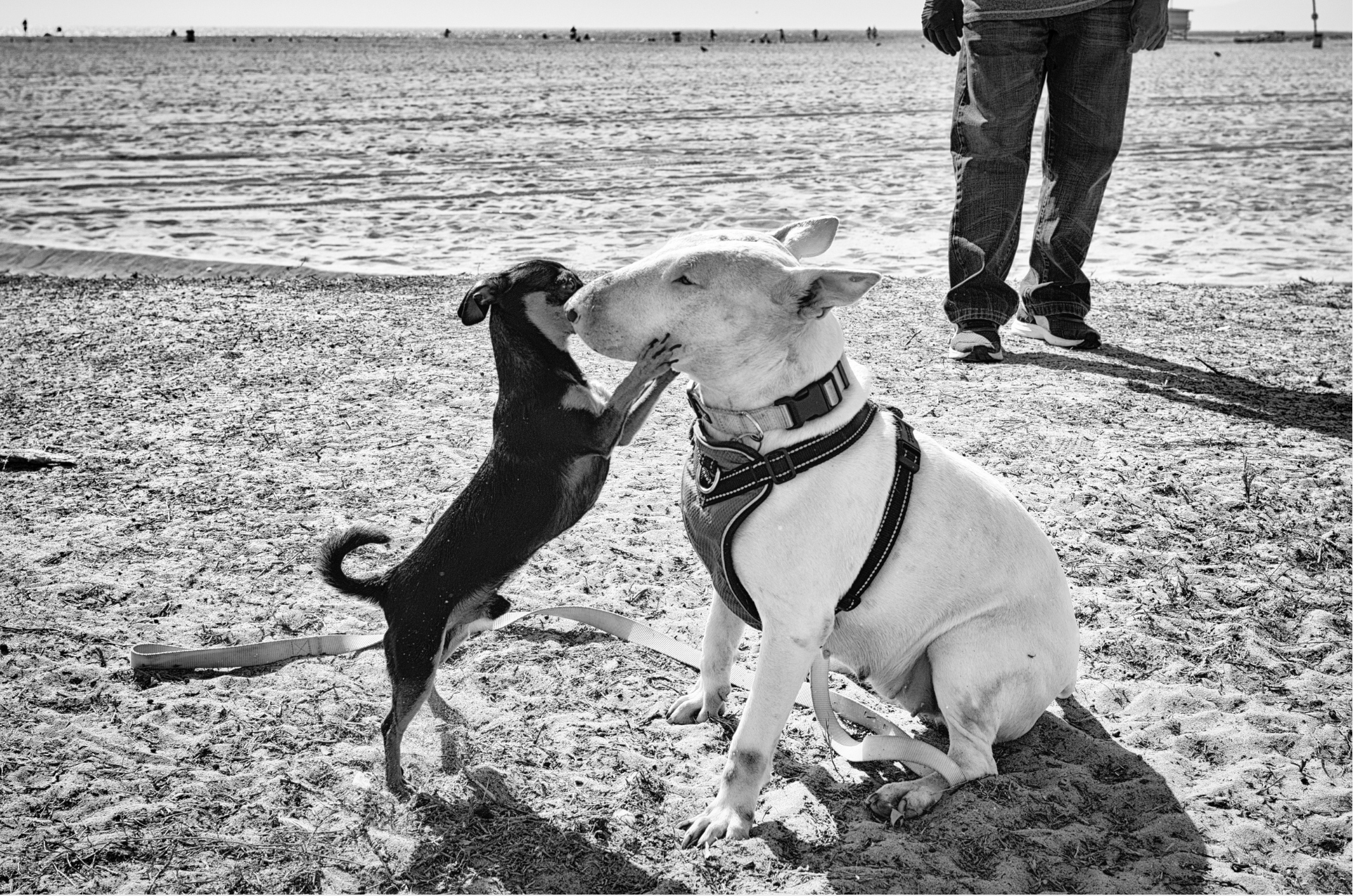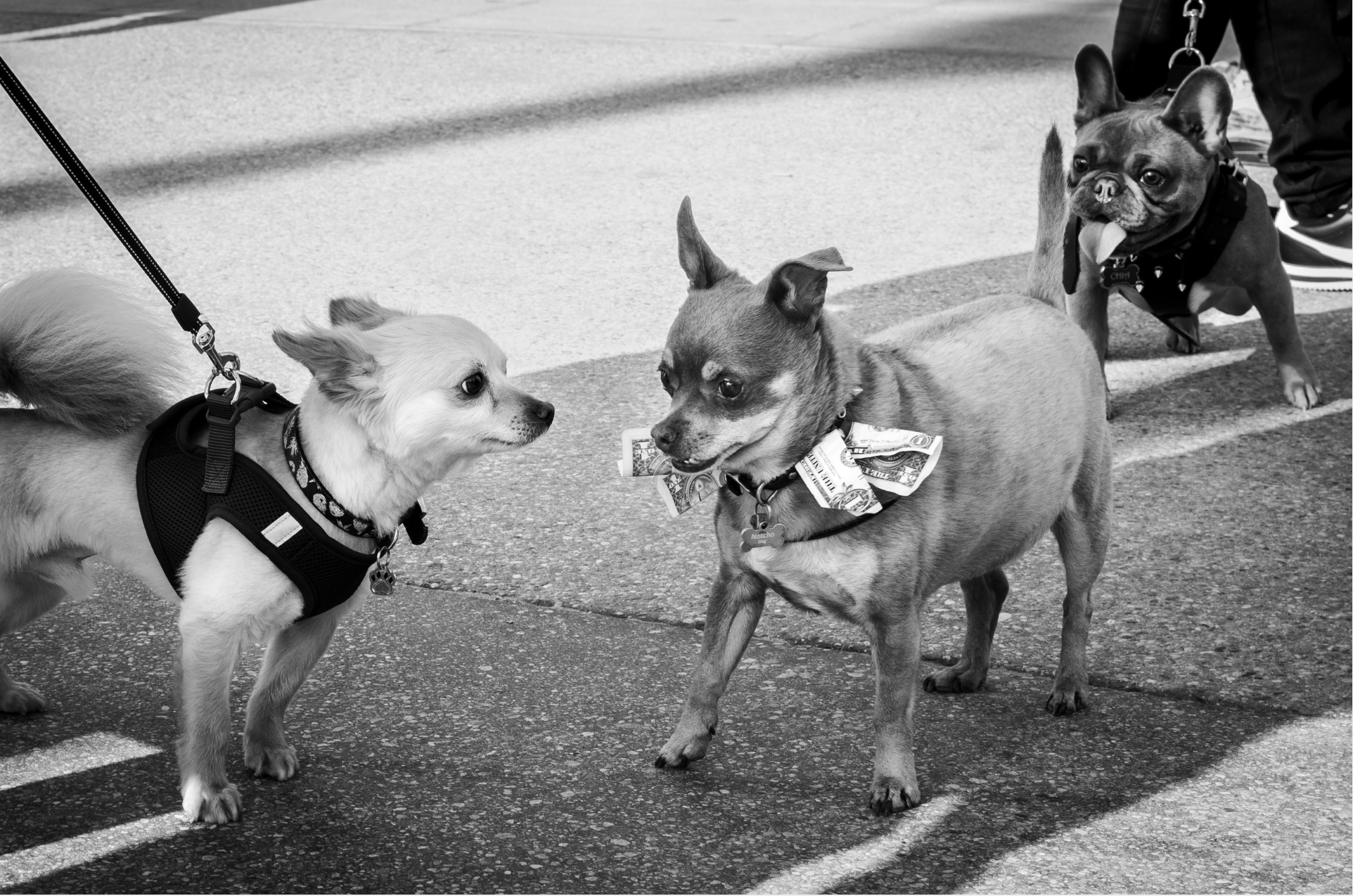Exploring Dogtown: A photographic journey with Dotan Saguy in Venice Beach
Welcome to this edition of [book spotlight]. Today, we uncover the layers of 'DOGTOWN,' by Dotan Saguy (published by Kehrer Verlag). We'd love to read your comments below about these insights and ideas behind the artist's work.
In this interview, we explore the "DOGTOWN" project, where American photographer Dotan Saguy takes us on a journey through Venice Beach, focusing on its dog residents. Saguy talks about how "DOGTOWN" started from his earlier work in Venice Beach, highlighting how dogs always played a major role in the area's unique culture. He shares why he keeps coming back to Venice Beach, a place known for its welcoming and diverse community, and how it inspires him to see things from new angles.
Saguy's method of capturing the fun, quirky, and touching moments of these dogs is very personal. His love for dogs and his ability to connect with them help him show off their personalities and how they fit into the Dogtown scene.
The story of Dogtown, from its rough past to its lively present, is told through Saguy's photos, showing how dogs have always been a part of the area. He also talks about his respect for Elliott Erwitt, a famous photographer, and how he hopes to follow in his footsteps while adding his own touch, especially in showing the relationship between dogs and their owners.
"DOGTOWN" is a captivating street photography project focusing on the diverse canine population of Venice Beach, California. Inspired by the storied past of Dogtown, an area once known for its rough surfer and skateboarder culture, this book captures the spirit of Venice Beach through its current four-legged inhabitants. With his Leica camera, American photographer Dotan Saguy pays tribute to the iconic Elliott Erwitt, presenting a collection that blends humor, emotion, and the unique skateboarding heritage of the area. This project, currently seeking support on Kickstarter, offers a unique lens on dog life in Venice Beach, making it an essential addition for dog enthusiasts and photography aficionados alike.
Starting "DOGTOWN" Project: What was the initial spark or moment that led you to start the "DOGTOWN" project? Was there a specific encounter or insight that inspired you to document the dogs of Venice Beach and their integration into the local skate and surf culture?
DOGTOWN was born out of my original Venice Beach project, which came out as my first book back in 2018: Venice Beach, the Last Days of a Bohemian Paradise. I shot that project over the course of 3 years from 2015 through 2017. While doing so I deeply immersed myself in the rich local culture, which is world famous for its skateboarding, body building, surfing, street performances and music. All throughout that project one of the patterns that kept re-emerging was the presence of dogs. Not as mere props or secondary characters to the story but as actual stars of the show in many scenes. Even the original photograph that convinced me to start my Venice Beach project, “Venice Kiss”, prominently featured 2 dogs. Later as I wrapped up my work for the “Venice Beach” book I could not see myself turning the page on Venice so I decided to continue shooting there but with more specific aspects of the culture in mind. I made a list of the things I loved most about Venice and dogs were on the top of that list. So over the next 5 years, while I was also shooting for other projects, I kept shooting in Venice and looking specifically for scenes involving dogs.
Choice of Venice Beach: Venice Beach is a recurring theme in your work. What draws you repeatedly to this location, and how do you keep finding fresh perspectives in an area you've photographed extensively?
There are many aspects of Venice that keep drawing me back: it’s one of the most inclusive, diverse, low key, friendly places I know. It doesn’t take itself seriously. It’s endlessly entertaining with its athletes, musicians, artists, and of course its “characters”. It doesn’t take itself seriously even though it’s world famous for the major impact it’s had on pop culture for the past century. All of this of course makes it an ideal playground for street photography and a place people seem to enjoy seeing photographs of. I try to keep a fresh perspective by focusing on distinct elements that draw my attention, like dogs in this instance. There are others of course but those will be a surprise for future publications!
Capturing Canine Personalities: Your photographs are noted for their ability to capture light-hearted, quirky, and emotional moments. Can you share more about your process in capturing the unique personalities of the dogs and their interactions with the Dogtown culture?
I grew up with a dog and I am very emotionally attached to my current dog, Beau. I find that I have an easy time connecting with dogs. Often easier than connecting with my fellow humans. I get them and I feel that they get me too. That means I can often spot the “characters” among dogs and anticipate what they might do next, which is essential for good candid street photography. Just like us humans, most dogs are kind of boring to photograph so the key is to spot the unique personalities — the "characters” — and follow them. Often there’s a human at the other end of the leash so sometimes I connect with the “owner” first and ask if it’s ok to follow along and snap a few photos. More often than not the person is flattered that I find their dog interesting and is more than happy to put up with me, especially if I offer to share the pictures. Of course sometimes I don’t even ask and steal a few frames just walking by. Other times there’s just a nod between me and the person. It depends on the situation. Of course carrying treats doesn’t hurt either when trying to make new furry friends.
The Evolution of Dogtown: The location has a rich history from being known as a slum area to becoming a vibrant community. Does your book reflect the transformation of this area, especially through the lens of its canine residents?
The actual slums you might be referring to date back to the 1950’s when Venice earned the nickname of "Slum by the Sea”. This was way before my time though! Apparently there were a lot of stray dogs around back then so it would have been cool to document. It might even be the reason it became known as Dogtown, at least that is one of the theories I heard. I know dogs were also quite present during the heyday of 1970’s Dogtown. There’s a famous photo of Jay Adams skateboarding in an empty private pool nicknamed the “Dog Bowl” because it was surrounded by the owner’s dogs. I only started documenting dogs in Dogtown in 2015 so my own work doesn’t carry that kind of historical depth unfortunately. It’s more of a snapshot of today’s dogs in today's Dogtown neighborhood. That said I try to include cultural and historical elements of the historical Dogtown in my compositions. The iconic Dogtown cross symbol is a recurring example in the book.
Homage to Elliott Erwitt: Your work is described as a modern homage to Elliott Erwitt. In what ways do you feel your photographs carry forward or diverge from Erwitt's legacy, particularly in your depiction of dogs and their humans?
Erwitt was a pioneer and pretty much invented the street photography of dogs. His legacy goes way beyond that of course but I think this is the area of photography that he is most known for, and probably the one he had the most fun shooting. I think it worked because it was done with humor and a deep empathy for dogs, both aspects I aspire to apply to my own photography of dogs. My photographs probably carry a bit more of an edge or a dark side to them when compared to Erwitt’s depictions full of witty humor and absurdity. It could be because of the Dogtown vibe or it could just be the photographic style I gravitate towards. Unfortunately Mr. Erwitt passed away as I was writing the introduction for my book. He was 95 years old with a brilliant career behind him so it was a big loss of course but not a tragic one given his age. I hope he would have given a nod and maybe a laugh to DOGTOWN. He was definitely on my mind when I was out shooting.
Challenges and Surprises: What were some of the challenges you faced while working on "DOGTOWN," and were there any surprises or unexpected moments that reshaped your project along the way?
DOGTOWN was my candy project. I started really focusing on it after shooting my last book “Nowhere to Go but Everywhere” (2020) about a family of 5 with young kids living in a school bus in Venice, CA. That book had happy moments but I was hanging out with a lot of people in very precarious living conditions. Then came COVID with all the restrictions we all had to put on our street photography. Needless to say that after that period I needed some fresh air, literally and figuratively. DOGTOWN was the project that gave me that fresh air. So I can’t think of any big challenges. It was such an uplifting project! Of course there were technical difficulties: dogs move fast and they’re low to the ground for the most part. Especially on skateboards ha ha! I shoot a Leica M without autofocus so you can imagine the challenge of running backwards in a crowd of people while crouching down to frame my subject at a dog's eye level. Good times! All I can say is that zone focusing and high shutter speeds are your friend!
To discover more about this intriguing body of work and how you can acquire your own copy, you can find and purchase the book here. (Amazon, Kehrer Verlag)











